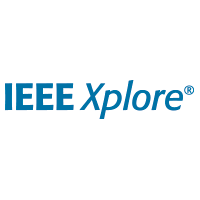ieeexplore.ieee.org/document/7498826
Preview meta tags from the ieeexplore.ieee.org website.
Linked Hostnames
2Thumbnail

Search Engine Appearance
A high-voltage compliant neural stimulator with HF wireless power and UHF backscatter communication
A dual-band wireless neural stimulation device with high frequency (HF) wireless power transfer (WPT) at 13.56MHz and ultra high frequency (UHF) backscatter communication (BSC) at 915MHz is presented. Neural interfaces hold great promise in the development of future treatment/therapy for debilitating neurological disorders, spinal cord damage, and loss of limb function. Most state-of-the-art wireless neural interfaces use either HF or UHF for both WPT and communication, with UHF used in low power systems (neural recording systems) and HF in high power systems (neuromodulation systems). In contrast, this work demonstrates the efficient use of two separate frequencies for WPT and communication, with negligible interference between the two. The higher signal strength of received power using HF WPT enables the implementation of high-voltage (HV) electrical stimulation which is critical (and typically battery-powered) for treatment-oriented neuromodulation devices. Simultaneously, BSC provides improved bi-directional communication data-rates and reduced power consumption, compared to typical active radios. The wireless stimulator has been implemented on a printed circuit board (PCB) using custom and off-the-shelf discrete parts. Measurements are provided demonstrating the efficiency of simultaneously operating WPT and BSC interfaces. The results of in vivo measurements (anesthetized rat) demonstrating the efficacy of the wirelessly-powered stimulator are also provided.
Bing
A high-voltage compliant neural stimulator with HF wireless power and UHF backscatter communication
A dual-band wireless neural stimulation device with high frequency (HF) wireless power transfer (WPT) at 13.56MHz and ultra high frequency (UHF) backscatter communication (BSC) at 915MHz is presented. Neural interfaces hold great promise in the development of future treatment/therapy for debilitating neurological disorders, spinal cord damage, and loss of limb function. Most state-of-the-art wireless neural interfaces use either HF or UHF for both WPT and communication, with UHF used in low power systems (neural recording systems) and HF in high power systems (neuromodulation systems). In contrast, this work demonstrates the efficient use of two separate frequencies for WPT and communication, with negligible interference between the two. The higher signal strength of received power using HF WPT enables the implementation of high-voltage (HV) electrical stimulation which is critical (and typically battery-powered) for treatment-oriented neuromodulation devices. Simultaneously, BSC provides improved bi-directional communication data-rates and reduced power consumption, compared to typical active radios. The wireless stimulator has been implemented on a printed circuit board (PCB) using custom and off-the-shelf discrete parts. Measurements are provided demonstrating the efficiency of simultaneously operating WPT and BSC interfaces. The results of in vivo measurements (anesthetized rat) demonstrating the efficacy of the wirelessly-powered stimulator are also provided.
DuckDuckGo
A high-voltage compliant neural stimulator with HF wireless power and UHF backscatter communication
A dual-band wireless neural stimulation device with high frequency (HF) wireless power transfer (WPT) at 13.56MHz and ultra high frequency (UHF) backscatter communication (BSC) at 915MHz is presented. Neural interfaces hold great promise in the development of future treatment/therapy for debilitating neurological disorders, spinal cord damage, and loss of limb function. Most state-of-the-art wireless neural interfaces use either HF or UHF for both WPT and communication, with UHF used in low power systems (neural recording systems) and HF in high power systems (neuromodulation systems). In contrast, this work demonstrates the efficient use of two separate frequencies for WPT and communication, with negligible interference between the two. The higher signal strength of received power using HF WPT enables the implementation of high-voltage (HV) electrical stimulation which is critical (and typically battery-powered) for treatment-oriented neuromodulation devices. Simultaneously, BSC provides improved bi-directional communication data-rates and reduced power consumption, compared to typical active radios. The wireless stimulator has been implemented on a printed circuit board (PCB) using custom and off-the-shelf discrete parts. Measurements are provided demonstrating the efficiency of simultaneously operating WPT and BSC interfaces. The results of in vivo measurements (anesthetized rat) demonstrating the efficacy of the wirelessly-powered stimulator are also provided.
General Meta Tags
12- titleA high-voltage compliant neural stimulator with HF wireless power and UHF backscatter communication | IEEE Conference Publication | IEEE Xplore
- google-site-verificationqibYCgIKpiVF_VVjPYutgStwKn-0-KBB6Gw4Fc57FZg
- DescriptionA dual-band wireless neural stimulation device with high frequency (HF) wireless power transfer (WPT) at 13.56MHz and ultra high frequency (UHF) backscatter com
- Content-Typetext/html; charset=utf-8
- viewportwidth=device-width, initial-scale=1.0
Open Graph Meta Tags
3- og:imagehttps://ieeexplore.ieee.org/assets/img/ieee_logo_smedia_200X200.png
- og:titleA high-voltage compliant neural stimulator with HF wireless power and UHF backscatter communication
- og:descriptionA dual-band wireless neural stimulation device with high frequency (HF) wireless power transfer (WPT) at 13.56MHz and ultra high frequency (UHF) backscatter communication (BSC) at 915MHz is presented. Neural interfaces hold great promise in the development of future treatment/therapy for debilitating neurological disorders, spinal cord damage, and loss of limb function. Most state-of-the-art wireless neural interfaces use either HF or UHF for both WPT and communication, with UHF used in low power systems (neural recording systems) and HF in high power systems (neuromodulation systems). In contrast, this work demonstrates the efficient use of two separate frequencies for WPT and communication, with negligible interference between the two. The higher signal strength of received power using HF WPT enables the implementation of high-voltage (HV) electrical stimulation which is critical (and typically battery-powered) for treatment-oriented neuromodulation devices. Simultaneously, BSC provides improved bi-directional communication data-rates and reduced power consumption, compared to typical active radios. The wireless stimulator has been implemented on a printed circuit board (PCB) using custom and off-the-shelf discrete parts. Measurements are provided demonstrating the efficiency of simultaneously operating WPT and BSC interfaces. The results of in vivo measurements (anesthetized rat) demonstrating the efficacy of the wirelessly-powered stimulator are also provided.
Twitter Meta Tags
1- twitter:cardsummary
Link Tags
9- canonicalhttps://ieeexplore.ieee.org/document/7498826
- icon/assets/img/favicon.ico
- stylesheethttps://ieeexplore.ieee.org/assets/css/osano-cookie-consent-xplore.css
- stylesheet/assets/css/simplePassMeter.min.css?cv=20250701_00000
- stylesheet/assets/dist/ng-new/styles.css?cv=20250701_00000
Links
17- http://www.ieee.org/about/help/security_privacy.html
- http://www.ieee.org/web/aboutus/whatis/policies/p9-26.html
- https://ieeexplore.ieee.org/Xplorehelp
- https://ieeexplore.ieee.org/Xplorehelp/overview-of-ieee-xplore/about-ieee-xplore
- https://ieeexplore.ieee.org/Xplorehelp/overview-of-ieee-xplore/accessibility-statement